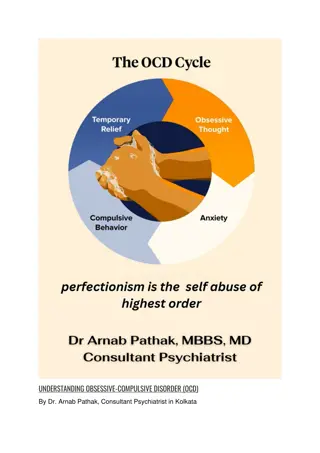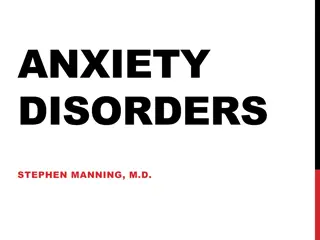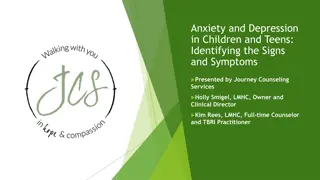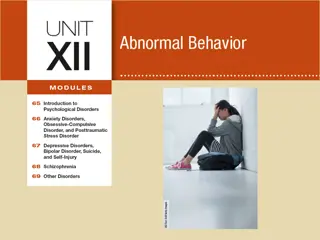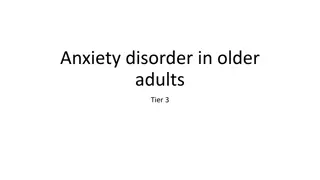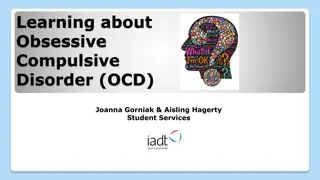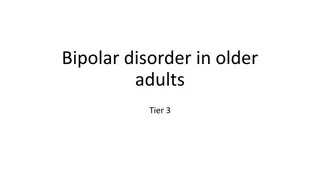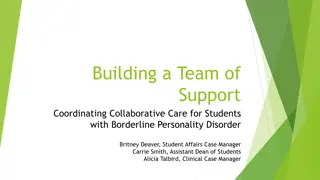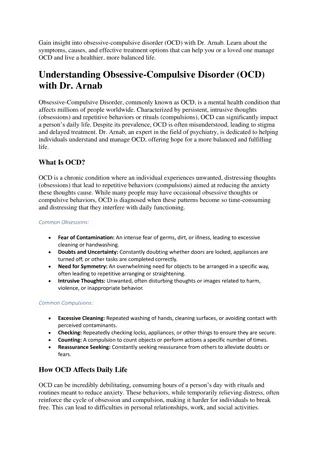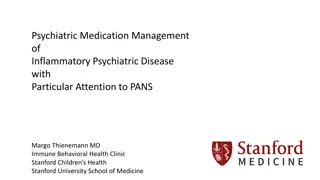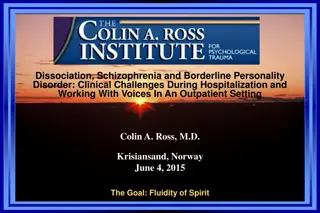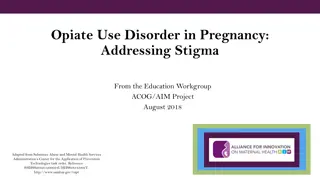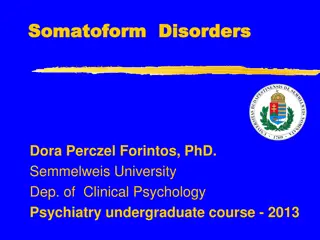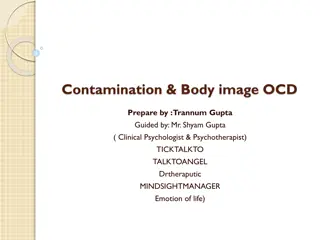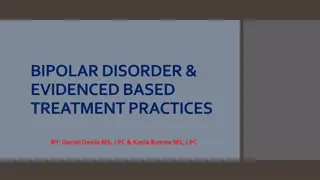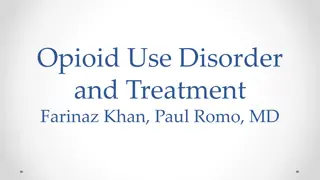Understanding Obsessive Compulsive Disorder (OCD) and How to Help Students
Obsessive Compulsive Disorder (OCD) is a serious anxiety-related condition characterized by intrusive thoughts and repetitive behaviors. This article highlights the signs of OCD, offers insights on how to support students suffering from OCD, and emphasizes the importance of creating a safe and accommodating environment in educational settings.
Download Presentation

Please find below an Image/Link to download the presentation.
The content on the website is provided AS IS for your information and personal use only. It may not be sold, licensed, or shared on other websites without obtaining consent from the author. Download presentation by click this link. If you encounter any issues during the download, it is possible that the publisher has removed the file from their server.
E N D
Presentation Transcript
LSA Training <<DATE>> OCD
This Week Obsessive Compulsive Disorder (OCD)
Obsessive Compulsive Disorder (OCD) Obsessive Compulsive Disorder (OCD) is a serious anxiety-related condition where a person experiences frequent intrusive and unwelcome obsessional thoughts, often followed by repetitive compulsions, impulses or urges. The illness affects as many as 12 in every 1000 people (1.2% of the population) from young children to adults, regardless of gender or social or cultural background. In fact, it can be so debilitating and disabling that the World Health Organisation (WHO) has actually ranked OCD in the top ten of the most disabling illnesses of any kind, in terms of lost earnings and diminished quality of life. - OCD-UK (2015)
What are the Signs? 2 main parts: Obsessions and Compulsions. Obsessions are unwelcome thoughts, images, urges or doubts. Students experiencing these will often be appear affected by them and anxious on a regular basis. Bare in mind, these thoughts themselves are not visible! Compulsions are the behaviours that are repetitive responses to the obsessive thoughts. They are interpreted as attempts to deal with and reduce distress, but in turn they may feed the obsessive thinking. Thoughts may revolve around many things, although some examples are: fear of failing to prevent harm, imagining doing harm, intrusive sexual thoughts, religious or blasphemous thoughts, fear of contamination, an excessive concern with order or symmetry and fear of illness. Compulsions depend on the nature of the obsession. (They can be small, as well as dramatic perfectionism is one to look out for.) Mind (2015) Obsessive-compulsive disorder (OCD): What is OCD? retrieved 15th December 2015 from www.mind.org.uk
How can we Help? Assure the student that anxiety, in and of itself, is natural. Educate them and their peers about what anxiety is. Do not tell them to stop worrying or that nothing bad will happen this can worsen things. Accommodate their compulsive behaviours where possible i.e. accommodate late arrivals due to compulsive behaviour and offer a supportive environment where they feel comfortable expressing their compulsions (and maybe their obsessions). However, do not allow OCD to become an excuse for not completing work be reasonable and sensitive. Arrange a private cue, that students can give you to alert you that they feel an increased risk of anxiety. Be aware of the possible side-effects of medication. Ensure that the classroom is supportive and safe . Bored of this yet? Get to know the student and what works for them. Anything else? Beyond OCD (2015) Helpful Support Strategies, retrieved 15th December 2015 from www.ocdeducationstation.org


